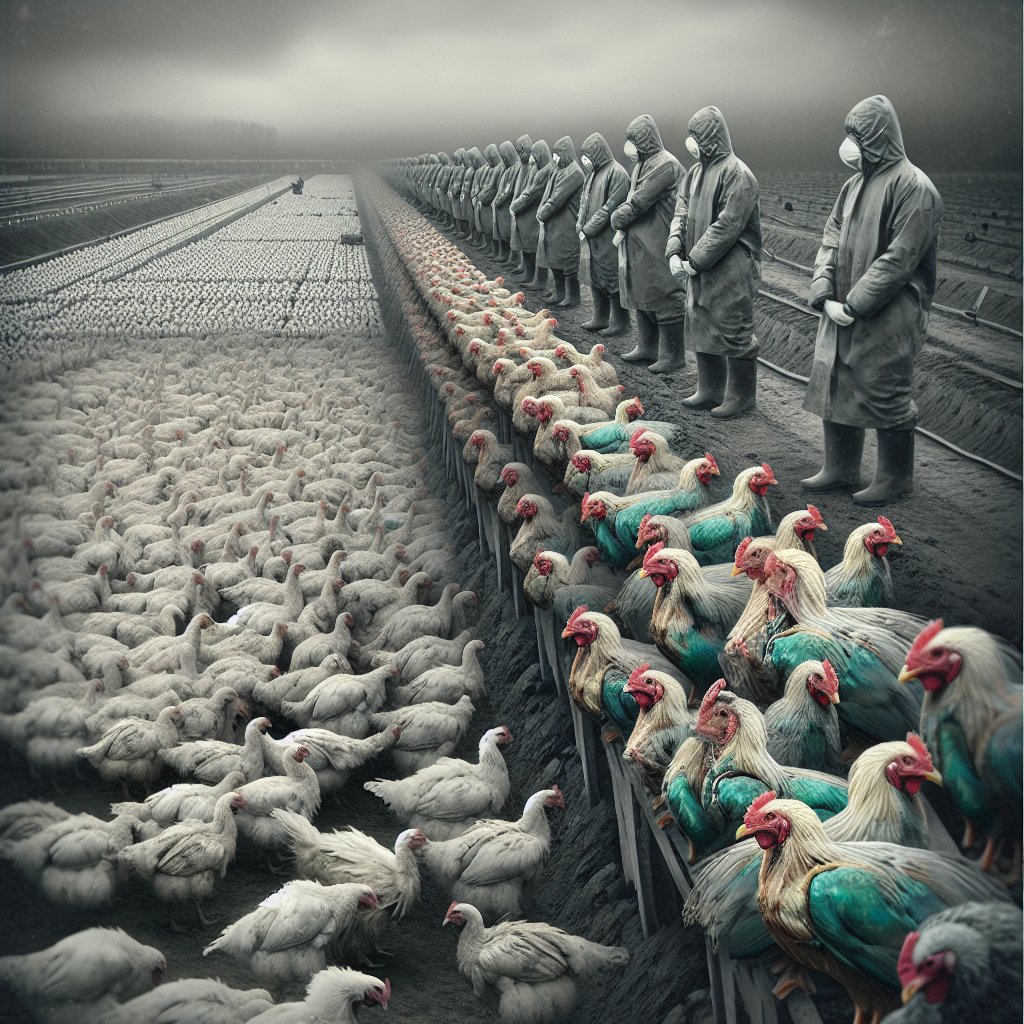Avian influenza can be a serious concern for poultry owners, as the disease can quickly spread and have devastating effects on their flocks. But fret not, because understanding the symptoms and taking necessary precautions can help safeguard your feathered friends. In this article, we will explore the common symptoms of avian influenza and discuss effective measures you can take to protect your flock and ensure their well-being. So, let’s dive in and equip you with the knowledge to keep your flock happy and healthy!
Recognizing Avian Influenza Symptoms
Respiratory Symptoms
One of the most common sets of symptoms associated with Avian Influenza (AI) is respiratory symptoms. If your flock is infected with AI, you may observe several signs related to the respiratory system. Birds affected by AI may exhibit coughing, sneezing, nasal discharge, and difficulty in breathing. They may also gasp for air and exhibit a reduced ability to vocalize. It’s important to note that these symptoms can vary in severity, and some birds may show no signs of respiratory distress at all.
Digestive Symptoms
Avian Influenza can also affect the digestive system of infected birds. Some symptoms related to the digestive system may include diarrhea, vomiting, decreased appetite, and water consumption. Affected birds may also experience weight loss and have a general decline in their overall health. If you notice these symptoms in your flock, it is crucial to take appropriate measures to prevent the further spread of the virus.
Nervous System Symptoms
In some cases, AI can also affect the nervous system of birds. Birds showing neurological symptoms may exhibit tremors, depression, lack of coordination, and paralysis. These symptoms can be distressing for both the birds and the poultry owner. If you suspect AI and notice any of these nervous system symptoms, it’s essential to promptly seek veterinary assistance and take necessary precautions to minimize the spread of the infection.
Swelling and Cyanosis
Another set of symptoms associated with AI is swelling and cyanosis. Cyanosis refers to a bluish discoloration of the skin, particularly noticeable on the combs, wattles, and legs of chickens. Swelling in these areas may also be present. These symptoms are indicative of severe respiratory distress and may be accompanied by other respiratory symptoms mentioned earlier. Monitoring and detecting these physical symptoms promptly can aid in the early identification and management of AI cases in your flock.
Drop in Egg Production
Avian Influenza can also cause a significant drop in egg production. Infected hens may experience a sudden decline or complete cessation of laying eggs. This decline can occur rapidly and may persist for several weeks or even months. It’s important to monitor your flock’s egg production regularly, as a significant reduction can be an indication of an underlying health issue, including AI.
Preventive Measures for Protecting Your Flock
Strict Biosecurity Measures
Implementing strict biosecurity measures is crucial in preventing the introduction and transmission of AI in your flock. This includes practicing good hygiene by sanitizing equipment and housing, regularly cleaning and disinfecting the premises, and maintaining a controlled environment with limited access to outsiders. Limiting the movement of people, animals, and vehicles on and off the premises can greatly reduce the risk of AI transmission.
Vaccination
Vaccination is an effective preventive measure against Avian Influenza. Consult with a veterinarian to discuss the use of appropriate vaccines for your flock. Vaccinating your birds can help decrease the severity and spread of the disease in case of an outbreak. Remember to follow the recommended vaccination schedule and ensure proper handling and administration of vaccines.
Quarantine and Isolation
Implementing quarantine and isolation protocols is essential for preventing the spread of AI within your flock. Isolate any sick or suspected birds immediately, and carefully observe them for signs of AI. Quarantine new birds and closely monitor their health before introducing them to the rest of the flock. Isolation and quarantine can prevent healthy birds from being exposed to the virus and allow you to take necessary steps to contain and manage any outbreak.
Proper Sanitation
Maintaining proper sanitation practices is crucial in preventing the spread of AI. Regularly clean and disinfect equipment, housing, and areas where birds roam. Keep the environment free from debris, droppings, and standing water, as they can harbor and promote the survival of the virus. Cleaning and disinfecting regularly can help minimize the risk of transmission and create a healthier environment for your flock.
Controlled Access and Visitors
Controlling access to your poultry farm and ensuring visitors follow strict biosecurity protocols is vital. Limiting the number of people entering your premises, such as workers, suppliers, or customers, reduces the risk of introducing AI or other pathogens. Establish clear guidelines for visitors to follow, including proper sanitation measures and the use of protective clothing and footwear. By enforcing controlled access, you can reduce the potential for disease transmission.
Health Monitoring
Regular health monitoring of your flock is essential in detecting any signs of AI early. Create a routine for regular check-ups and observations to identify any changes in behavior, physical appearance, or egg production. Keep records of any suspicious symptoms or abnormalities to assist with early diagnosis and intervention. Timely detection can help prevent the further spread of AI and protect the overall health of your flock.
Proper Disposal of Dead Birds
In the unfortunate event of bird deaths due to AI, it’s crucial to handle and dispose of the carcasses properly. Wearing protective clothing and gloves, carefully collect the carcasses and place them in securely sealed bags. Avoid spreading any fluids or materials from the dead birds to prevent contamination. Contact your local authorities or veterinary professionals to inquire about the appropriate disposal methods for animal carcasses.
Minimizing Stress
Stress can weaken the immune system of birds, making them more susceptible to diseases like AI. Minimize stress by providing proper nutrition, maintaining a comfortable environment, and avoiding overcrowding. Birds should have enough space to move and access to clean water and feed at all times. Minimizing stress levels can help strengthen your flock’s immune system and improve their overall well-being.
Wild Bird Management
Wild birds, particularly waterfowl, are natural carriers of AI and can introduce the virus to your flock. Implement measures to manage and discourage wild bird access to your poultry farm. This can include physical barriers, such as netting or fencing, to prevent wild birds from entering the premises. Additionally, make sure food and water sources are not easily accessible to wild birds to reduce the risk of indirect transmission.
Collaboration with Authorities
Collaborating and sharing information with local authorities, agricultural agencies, and veterinary professionals is crucial in protecting your flock from AI. Stay informed about any AI outbreaks in your area and follow any guidelines or recommendations provided by relevant authorities. By working together, you can contribute to a coordinated response, early detection, and effective management of AI cases in your region.
By recognizing the symptoms of Avian Influenza and implementing comprehensive preventive measures, you can protect your flock from this highly contagious disease. Remember to maintain strict biosecurity measures, vaccinate as recommended, practice quarantine and isolation, ensure proper sanitation, and collaborate with authorities to secure the health and well-being of your birds. With diligence and dedication, you can safeguard your flock and promote the overall health of the poultry industry.




